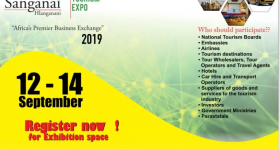From bushland to beaches, Mozambique has incredible natural beauty that has world-leading preservation efforts and ever-more visitors
Sandbanks and small islands dot the 2,500km coastline of Mozambique, dazzling the visitor’s eye with clear turquoise waters, and deep walls of coral. Last year, nearly 2 million tourists visited here, many from the UK and Portugal, but about half of whom hailed from neighbouring South Africa, eager to see for themselves the islands, reefs and beaches that were rumoured to be even more beautiful than those back home.
Mozambican Minister of Tourism, Carvalho Muaria, points out that the new tourist resorts that have emerged along the country’s coast in recent years feature new lodges in the areas of Inhambane, Gaza, in the Quirimbas Archipelago, and in new luxury resorts that are “among the most exclusive destinations in Africa.”
“We are fast becoming one of the most important destinations in sub-Saharan Africa,” says Mr Muaria. Hard numbers back up this boast: The tourism sector grew by 11 per cent in 2012, accounting for almost £2 billion in revenues. More than 40,000 jobs were powered by foreign spending at restaurants, hotels and trips to the dry grasslands of the northern plains, as well as medieval forts and churches built in the 16th century by the Portuguese.
Already renowned for its pristine coastlines and beaches, Mozambique holds a real treasure trove of delights for nature lovers. The spectacular nature reserve and lake at Niassa in the north is the largest protected area in the country. The Niassa Reserve covers 42,000km2 and is twice the size of the more famous Kruger National Park in South Africa. The poor road network and lack of associated tourism infrastructure mean only the most determined of travellers currently experience its fast-flowing rivers, huge expanses of miombo woodland, sweeping savannah punctuated with monolithic granite mountains and free-roaming wildlife.
Perhaps the greatest restoration story of our time can be told about Gorongosa National Park. It is a unique 20-year public-private partnership between the Government of Mozambique and the Gorongosa Restoration Project, a US non-profit organisation, to restore and protect what has been called the “most diverse park in the world” and the crown jewel of Mozambique’s national parks.

Mozambique’s Tourism Ministry has focused on revitalising the old colonial charm of the country and carrying out a strategy to develop new, key properties that travellers will want to see
Located at the southern end of the Great African Rift Valley in the heart of central Mozambique, its animal population is still in a recovery phase, following the effects of the civil war. “Nature, on its own, is fantastic: it has an incredible regenerating capacity; it will recuperate itself merely by protecting it,” says Mateus Mutemba, Administrator of Gorongosa National Park.
The project aims to balance tourism, conservation, science and communities. Last year Mr Mutemba received the prestigious ‘Conservation Hero of the Year’ award at the International Wildlife Film Festival (IWFF) in Montana in honour of his “significant contributions, exemplary service, knowledge, and impact on wildlife or marine conservation.”
“Gorongosa has the particularity of, firstly, being wild and natural,” he says. “Secondly, we are commercialising the park as a place of peace and tranquillity, where people obtain the maximum benefit from the intimate contact with nature, as opposed to other parks.”
Over the past 13 years, the Tourism Ministry has focused on revitalising the old colonial charm of the country and carrying out a strategy to develop new, key properties that travellers will want to see. “Anchor projects came about – Zambezia – and projects in the north, Nampula and Cabo Delgado,” says Mr Muaria. “These projects enable us to improve people’s lives.”
Travel to Mozambique currently is expensive, as there is not enough hotel accommodation to meet the demand. “The German group, Tool, has already contacted us because they want our market and want to come in with 1,000 booked seats,” says Mr Muaria. “We do not yet have the means to host them. Russians – who normally travel to the Middle East – want to come to Mozambique with nearly 1,500 people for 15 days to do a ‘sun tour’. Our challenge is to figure out how to host them. We are also in negotiations to attract more airline companies. Currently, we have Qatar, Kenyan, South African, and we are negotiating with Emirates and British Airways.”
So, “boa viagem!” as the locals say, or bon voyage, as the future for travel here looks ready for take-off.















